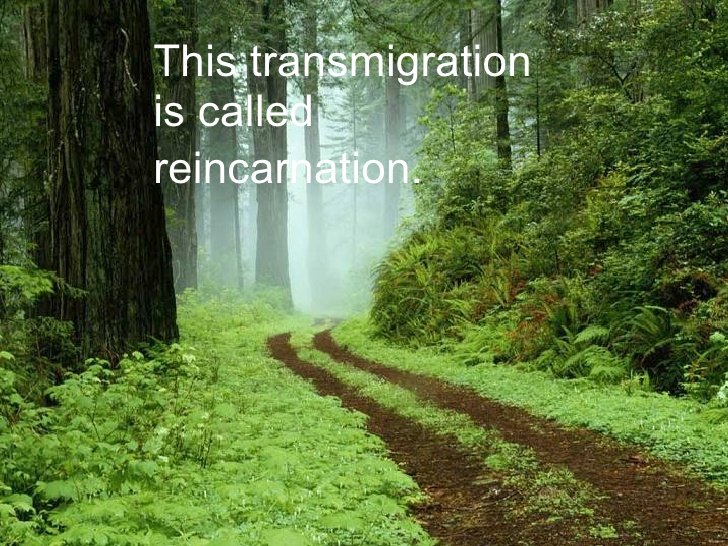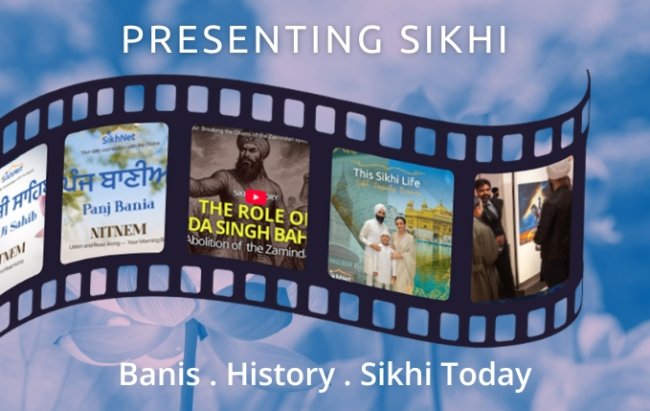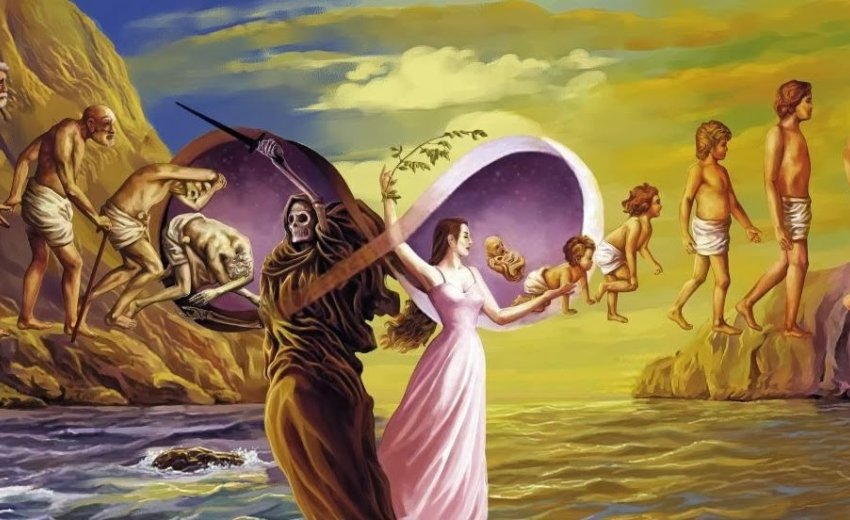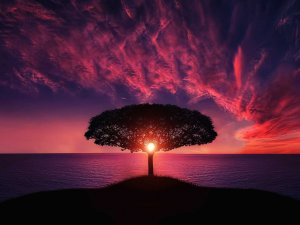REINCARNATION/TRANSMIGRATION: Revisited & Re-explored
To Indian philosophic and mythological lore belong the roots of the very rich and complex idea of reincarnation and transmigration. Semitic religions - Judaism with its two offsprings, Christianity and Islam, and the Bahai faith sidestep them.
Both Hindu Vedantic and Semitic systems, whose beginnings are lost in antiquity, posit that a Day of Judgment follows the end of life. In the Divine Court each of us will be judged and held accountable for our transgressions - in thought and deed; mitigating circumstances accommodated, willful behavior noted.
 Depending on this final balance sheet, the Indic systems posit that, most likely, we are returned for another sojourn on Earth to atone for what we have done or left undone. In what form we return, as what species of life, rests on that final audit of our life. The Creator has a choice of 8,400,000 species to choose from. And the cycle continues from one birth to another - recycled again and again until and unless liberated. What and when does that happen? It depends. In the rare case of having lived an exemplary life of rectitude and service to the Creator, we would, at judgment, be released from this perpetual recycling.
Depending on this final balance sheet, the Indic systems posit that, most likely, we are returned for another sojourn on Earth to atone for what we have done or left undone. In what form we return, as what species of life, rests on that final audit of our life. The Creator has a choice of 8,400,000 species to choose from. And the cycle continues from one birth to another - recycled again and again until and unless liberated. What and when does that happen? It depends. In the rare case of having lived an exemplary life of rectitude and service to the Creator, we would, at judgment, be released from this perpetual recycling.
And this freedom is the goal of human life. So proclaim the Indic religions.
Clearly the ideas of reincarnation and transmigration are both powerful and sophisticated; they define an exquisite model of finely calibrated justice at the end of life. They also interweave all creation into one large tapestry.
But are these processes merely transactional or are they transformational?
Given their enormous presence in the larger Indian culture, reincarnation and transmigration come across as the dominating themes in the Guru Granth Sahib.
Should they be?
Given the overwhelming frequency in the Guru Granth of these topics, the majority of Sikhs likely views reincarnation and transmigration as fundamentally real. It's true that they are promoted as such in Hindu mythological lore.
This also means that our focus in life automatically shifts to what will likely happen after death. We then begin to undervalue this life on Earth - its needs, rewards, promises and challenges while we overvalue rituals and practices that we do not understand but that motivate us by fear of the unknown to come.
The lines of Bhagat Trilochan from the Guru Granth (p. 526) are the most often cited by those who interpret matters literally. His words in translation follow:
"At his very last moment, one who thinks of wealth, and dies in such thoughts, shall be reincarnated over and over again, as a serpent.
He who dies in thoughts of women shall return as a prostitute.
One who dies thinking of mansions shall be reincarnated as a goblin.
......
At his very last moments, one who thinks of the Lord, says Trilochan, shall be liberated; the Lord shall abide in his heart."
Most commentators that I have read or heard take Trilochan's words as the gospel truth - absolutely literally true. I, on the other hand, look at them as beautiful poetry that needs to be interpreted in the context of time, culture and the march of science.
An academic biologist, Dr Sukhraj Singh Dhillon, responded to one of my essays that remain analytically critical of our literal embrace of Trilochan with a judgment that I salute for its brevity but not for help in resolving this controversy. He said: "The aspect of our belief in Reincarnation/transmigration and next life will affect how we interpret gurbani. …. IJ Singh doesn't believe in reincarnation and transmigration but Rawel Singh does. Most of the members (readers) fall in one category or the other."
I believe that a 3-line statement as this does not enlighten us. I have parsed this theme at length in several essays but specifically in one titled From Here to Eternity. Today I have cannibalized that and a few earlier essays on related topics to stitch together this new perspective.
My views on reincarnation etc are more nuanced than are implied in the four-word comment above.
What then to make of Trilochan's hymn and the myriad other references to transmigration and reincarnation in the Guru Granth?
A non-traditional reinterpretation of Trilochan could become transformational rather than remaining transactional, and yet be consistent with the fundamental message of Gurbani.
If one takes the Hindu view of the cycle of birth and rebirth literally, one would then be logically bound to look for one's ancestors in cockroaches, rats, mice, lions or kings and queens, depending upon how their earthly lives were measured by a heavenly judge. It seems to be a logically coherent and consistent model, but not a likely one.
Why NOT to interpret Trilochan's hymn literally?
Literal interpretation of the last stanza of his hymn, for instance could suggest to us that one may sin the whole life to one's heart's content; all that is necessary to be in the Creator's good grace is to die with the name of God on one's lips.
Now, how does that fit the model of perfect justice?
The poetry and imagery must be kept in mind in exploring the meaning.
What Trilochan says to me is that if you were obsessed with mansions all your life, then you may as well be a ghost or a goblin that supposedly haunts such buildings. If money and treasures have defined your life, you may as well be a snake. (In the Indian culture, snakes are reputed to make their home near buried treasures.)
Why? Because your character traits have emerged from your preoccupations and values - that is the kind of a person you have become. I interpret all of the examples in his hymn similarly - it is metaphorical language, not to be literally translated.
To my mind, what Trilochan means here is to point to what one has become over a lifetime of habits. "Reincarnation", then, is used as a metaphor (this is poetry, right?), for the biological life cycle.
So, until we get it "right", we are going to embody the human (or animal) experience over and over again in this life. Put another way, until we learn to live without a personal stake (haumae), we are going to attach ourselves to behavioral modalities which, unchecked, lead to addictive/neurotic personalities, and so the cycle continues.
It is not possible to talk about "here and hereafter" in the traditional Indian culture without reference to reincarnation. Indians take the matter quite literally and seriously. It is not an easy matter to upend the whole applecart. The Gurus, therefore, taught in the language of the people and in the context of the times in which they lived. The Gurus chose the language and style that would resonate with the average person.
This is exactly why the Guru Granth visits this recurring theme on reincarnation and transmigration so often.
Some level of prophetic language a la Trilochan may be necessary to goad people into the right behavior. Hence the dire warnings in his writing!
Guru Granth also reiterates, more than once, the Hindu belief that there are 8.4 million species through which the soul may cycle and recycle until liberated. I think the number is not to be taken literally. It is like saying in English that there are a gazillion species; it is not a fixed number but it is large.
If tomorrow, greater or lesser number of species is documented by evolutionary biologists, one must not conclude that the ancient Indian philosophers or the Sikh Gurus were in error. Effective teaching requires that the cultural context be kept in mind.
So, what do I personally believe happens after death?
My reading of the Guru Granth Sahib further connects me with the morality play in two well known lessons. When Socrates, at his trial, was asked if there was life after death his answer was simply awesome. Said he, if there is then it would be absolutely great; a fantastic opportunity to meet great minds like Hippocrates who had gone before him. And if there were none then it would be like a dreamless sleep; he was an old man and needed the rest.
The second view I share with you comes from Norman Vincent Peale, the 20th Century prophet of Positive Thinking. He compared life after death to the birth of a baby. If you could ask a baby in utero its opinion of life after birth, the answer might be that it is at home where it is - why exchange that comfort for the unknown. Asked after birth of its prenatal existence it would have no opinion.
Death is a veil, like birth, through which we may not see. If you live this life right, the afterlife would take care of itself. It surely would be no less.
Science tells us that matter and energy change form but are neither created nor destroyed. This says to me that we have always been and will always be around in some shape or form, including what is left of the (degraded?) version or fragments of our DNA.
In reincarnation and related questions the analogy that comes to mind is the engineering concept of servomechanisms, with a continuously recalibrating circuitry, that have error-sensing feedback loops that modify the process as indicated by the data coming in.
This is how I would translate the idea of the greater biological life cycle in the language of today. Many such feedback circuits are known to exist in human neuronal connectivity, for instance.
My view would be that, metaphorically reinterpreted, the terms reincarnation and transmigration really mean that after death everyone and every species has life that becomes part of the greater biological life cycle.
In the context of a large expansive biological life cycle, it remains immaterial whether one ends up pushing up roses or becoming a feeding frenzy for worms; either is equally meaningful.
This is how I see the cycle of birth and rebirth, reincarnation or issues like transmigration.
End-of-life questions on reincarnation and related matters are not really helpful. What is critical instead is the challenge posited by Guru Amardas (Guru Granth p. 922): What footprints will you leave in the sands of time? (Eh sareera merya iss jugg meh aaye ke kya tudh karam kamayaa).
You might be wondering why I am engaged in such a protracted rigmarole around this when some readers will surely take umbrage at my analyses. What I am hoping for is not a 2-line or 4-word summary judgment but for a continuing and thoughtful conversation, not confrontation, on matters that are both timely and important to cleaning the cobwebs of our mind.
Statements and edicts etched in stone are not helpful.
[email protected]
April 2, 2015






